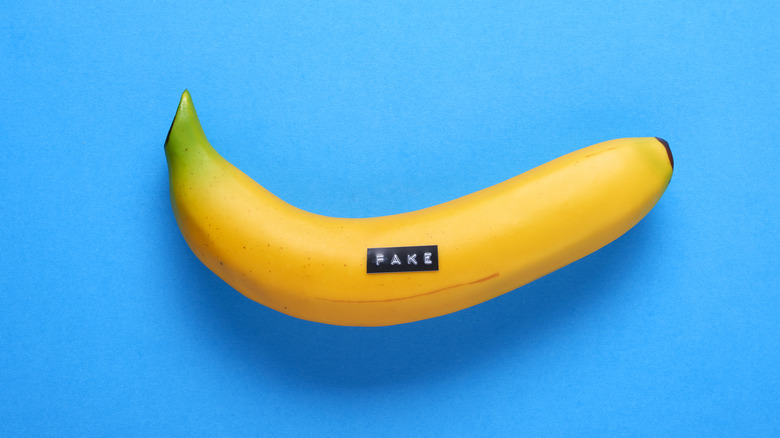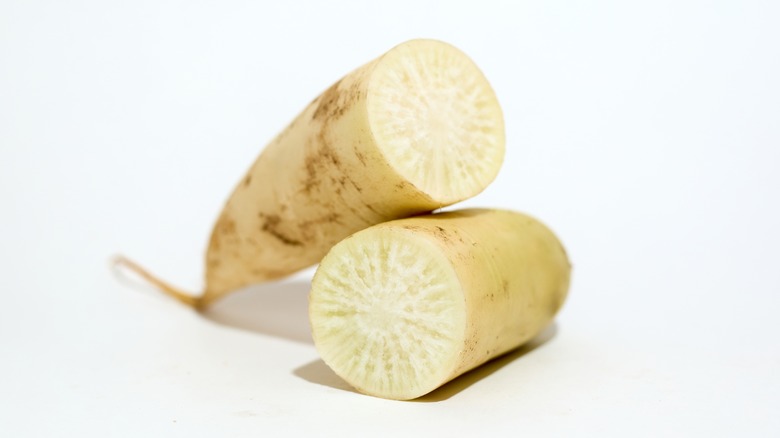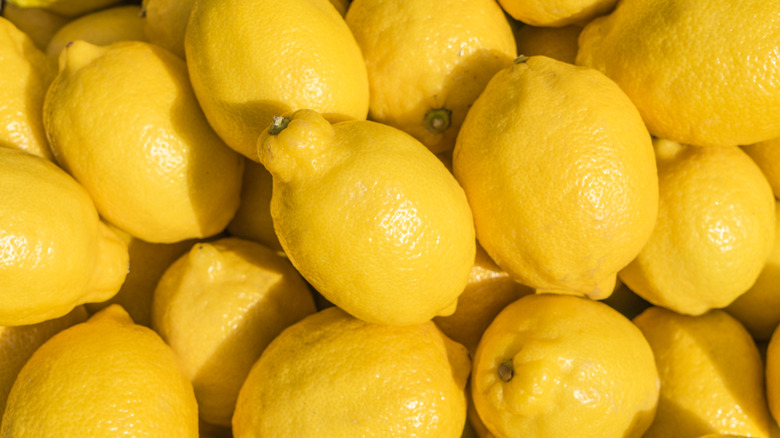The WWII Ban That Had Home Cooks Inventing Fake Bananas
It's easy to take bananas for granted. No matter what fruits are in or out of season, the mighty banana is a constant on our grocery store shelves, year-round. Even if you don't eat many of them, if they were suddenly taken away, you'd probably be hankering for one terribly. That's exactly what happened to the citizens of Britain during World War II. Food shortages and rationing were just one effect the war had on practically the entire world, and for the European isle, there was an absolute ban on bananas.
Surrounded by water, Britain was receiving an astounding 20 million tons of imported food every year. The German army knew this, of course, so they made it a point to target the island's food routes. Additionally, the refrigerated ships that brought bananas to the country were required for the war effort. As a result, the British Ministry of Food rationed imported food during the war, with the Minister of Food banning bananas altogether in late 1940. Humans tend to be at their most resourceful and creative during such dire times as war, and you can bet someone came up with a way to mimic beloved bananas.
How do you fake a banana?
In the modern world, plant-based eating has become extraordinarily popular. There is big business in faking meat and dairy, but how do you make a plant-based plant? With another plant, of course. Marguerite Patten was a United Kingdom native and home economist who was hired by the country's Ministry of Food during World War II. She famously hosted a radio program and food demonstrations at department stores, showing the public how to create satisfactory dishes despite food rationing. One of her specialties was how to create mock bananas.
By boiling or roasting parsnips and flavoring them with a little sugar and banana essence or extract, a banana imposter was born, with the texture of the soft parsnips mirroring the feel of bananas. The mashed concoction could even be colored yellow, and it was popularly spread on bread and eaten as banana sandwiches (not to be confused with Elvis Presley's favorite sandwich). The yearning for the fruit was so strong in the country during the war, that some artists wrote songs about the collective yen, including "When Can I Have a Banana Again?" and "I've Never Seen a Straight Banana." It was a full five years after the ban when bananas were again imported into Britain, and the event, which saw five million bananas arriving on a ship, was marked by a parade.
Lemons joined bananas on the banned list
Bananas weren't the only food items that were outright unavailable in Britain during World War II; lemons were also banned. To cope, people would boil apple peels to make a lemon substitute. Nearly everything else was heavily rationed, with the exception of things like bread, fish, and vegetables, which remained unrestricted. Like in America, the British government encouraged families to garden, then pickle and preserve their crops.
With the help of people like Marguerite Patten and other contributors from the Ministry of Food, families learned to fake several foods, and not just bananas, with unconventional and curious substitutes. Mock sausages were made with lentils (was this the world's intro to plant-based meats?); mock fish cakes consisted of potatoes and beans flavored with anchovies; mock oyster soup didn't contain shellfish at all, but instead, artichokes. Creativity in the kitchen certainly thrived during World War II and, in the end, many people learned how to satisfy their unattainable cravings with bits from the garden. Still, there's nothing like the real thing.


